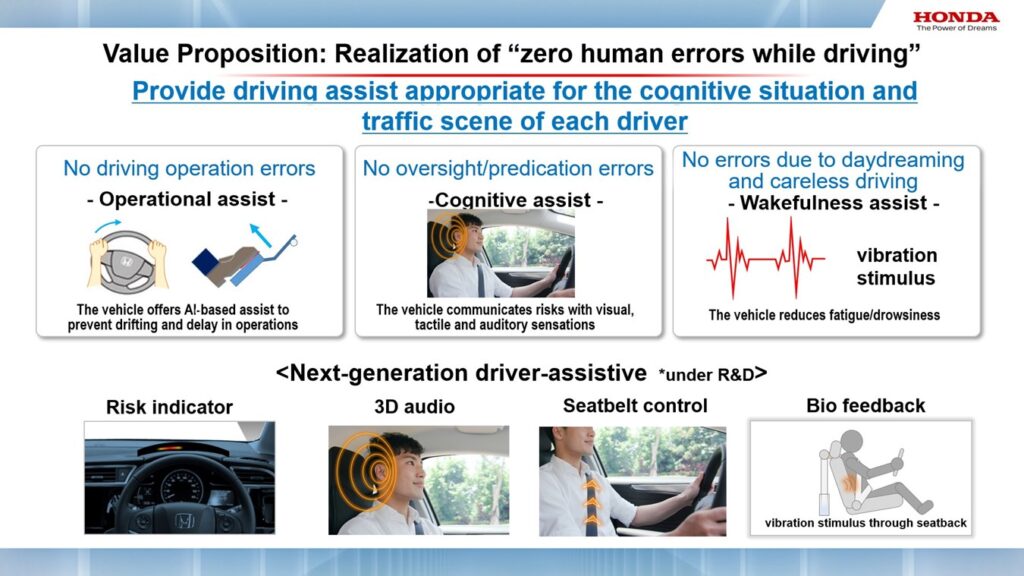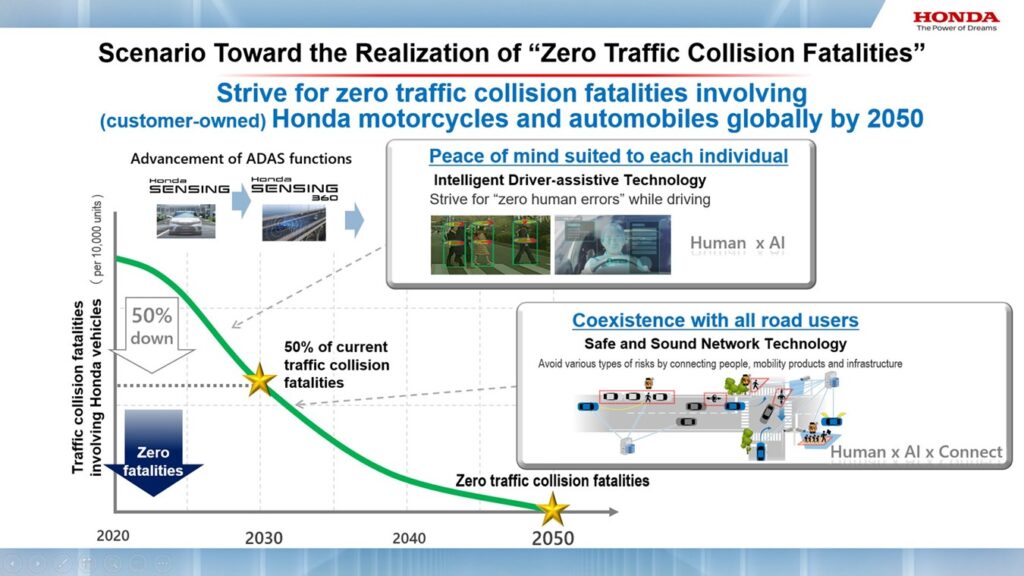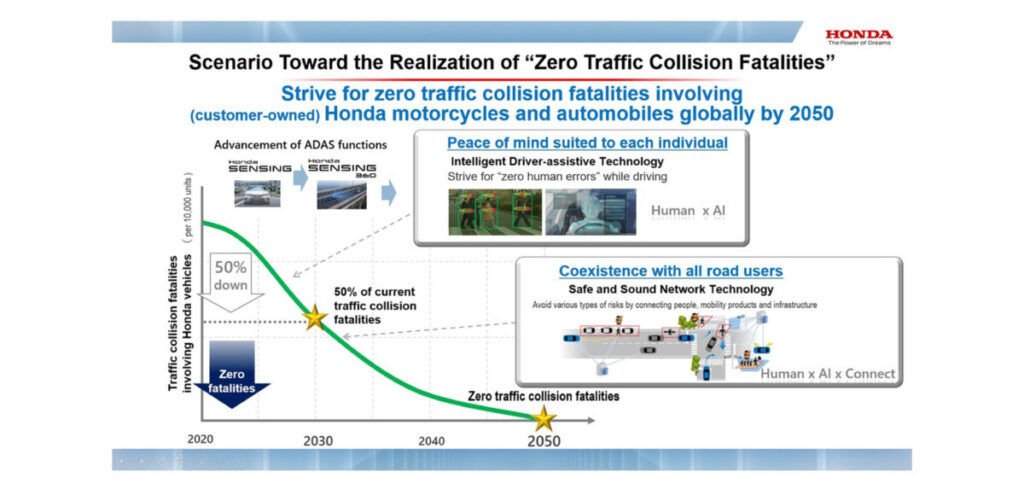Auto maker Honda has laid out its roadmap to “zero traffic collision fatalities involving Honda motorcycles and automobiles globally by 2050”, which it hopes to achieve by utilizing two key technologies: its artificial intelligence-powered (AI) ‘Intelligent Driver-Assistive Technology’, and its ‘Safe and Sound Network Technology’.
Initially, Honda will expand the introduction of its Sensing 360 ADAS to all models on sale in major markets by 2030, and continue the expansion of the system’s motorcycle detection function and other enhancements to its ADAS, including its application on motorcycles.
The Intelligent Driver-Assistive Technology will take into account factors that contribute to human error in driving situations, using data gathered from Honda’s fMRI-based study of the human brain and analysis of risk-taking behaviors. Through the use of a driver monitoring camera, the system will scan for predictors of driving errors by identifying patterns within the driver’s behavior. The system will also utilize ADAS sensors and cameras to recognize potential risks in the vehicle’s surroundings, enabling the AI to detect driving risks. Honda’s idea is to use cueing for the driver to alert them to risks, for example via vibrations through the seatback. According to Honda, the technology is being developed with the intent of mitigating individual driver’s errors, with the underlying technology currently being developed ready for implementation in the late 2020s.
In addition to ADAS based functions, Honda also aspires to harness connected vehicle technologies. This will rely on cloud-based data to alert users to potential risks, allowing them to avoid them. The data will be sourced from both roadside infrastructure and Honda vehicles in addition to personal devices such as cell phones.
 Honda wants information derived from this data to be communicated intuitively to drivers, motorcycle riders and pedestrians through “cooperative risk HMI (human-machine interface)”, which will make it possible for the system to encourage road users to take action to avoid a collision before it happens.
Honda wants information derived from this data to be communicated intuitively to drivers, motorcycle riders and pedestrians through “cooperative risk HMI (human-machine interface)”, which will make it possible for the system to encourage road users to take action to avoid a collision before it happens.
Aiming for real-world implementation of this technology after 2030, Honda states it will build the system and complete verification of effectiveness in the first half of the 2020s, then accelerate industry-wide and public-private collaboration with an aim to standardize the technology in the second half of the 2020s.
Keiji Ohtsu, president and representative director of Honda R&D, commented, “Striving to completely eliminate mobility risks for everyone sharing the road, Honda will offer safety and peace of mind of each and every road user as a new value. Applying our future safety technologies which will embody such new value, Honda will work toward the realization of ‘zero traffic collision fatalities’ involving Honda motorcycles and automobiles globally by 2050. For the realization of a collision-free society where all road users care for each other and the freedom of mobility becomes possible, we will further accelerate our industry-wide and public-private initiatives.”



